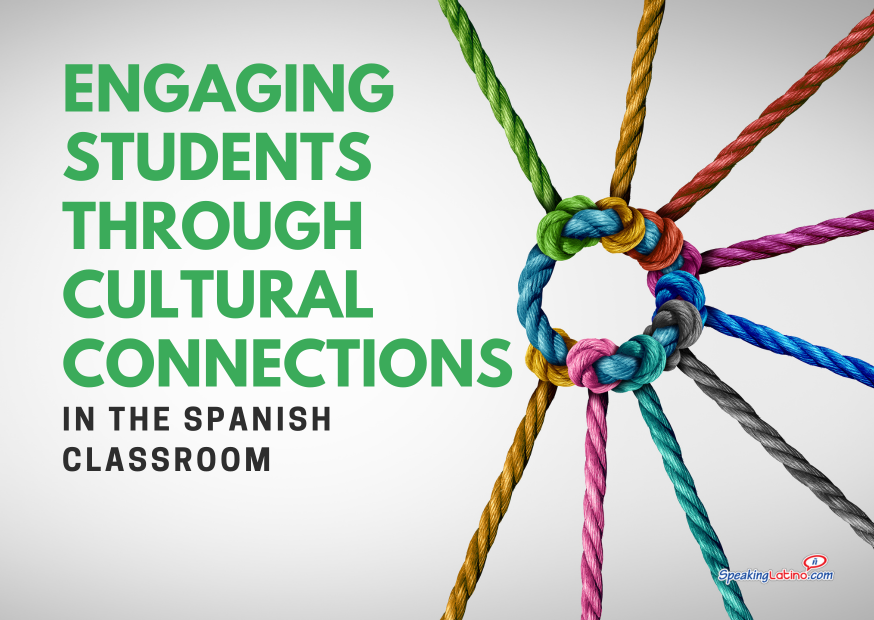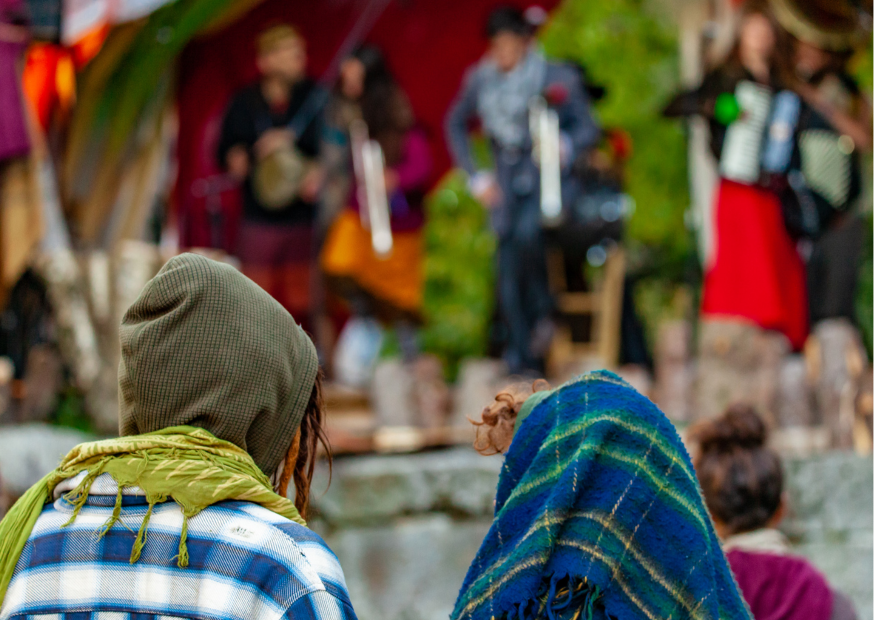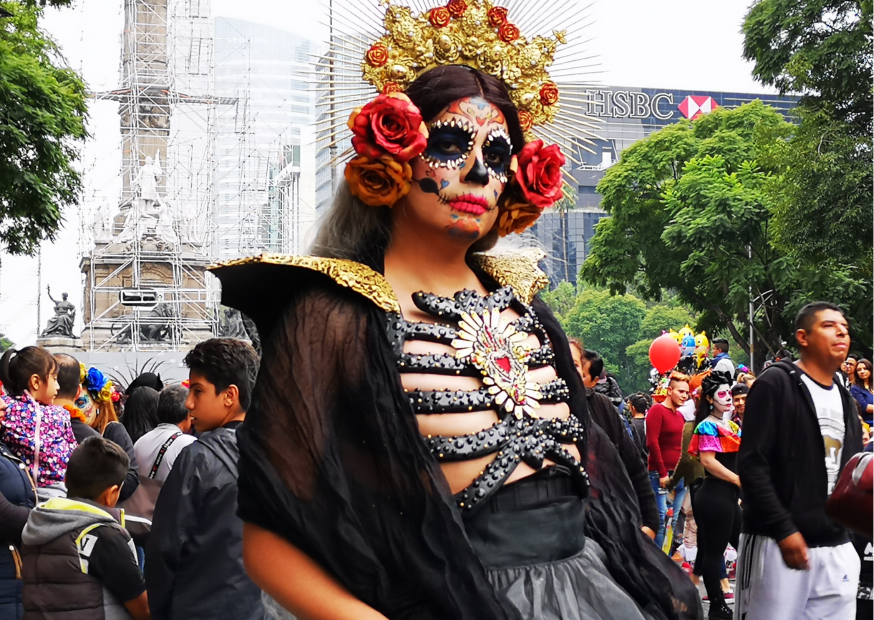
The content of this article is based on the presentation, Uplifting Our Students’ Voices through Our Curriculum by Jennys McKinney, which was part of the World Language Teacher Summit.
The 💙 Heart of Language Education
In the modern landscape of education, teaching a language extends far beyond the traditional focus on syntax and phonetics. It encompasses a broad spectrum of cultural experiences and values that are intrinsic to the spoken word.
Language does not exist in a vacuum; it is a reflection of societies, histories, and individual stories—thus, the
Celebrating Diversity Through School Events
Cultural events within the school community play a crucial role in the expansive journey of education. These events break down classroom walls and invite a world of tradition, history, and diversity into the student's experience. They create a vibrant tapestry showcasing performances, culinary traditions, and the enduring spirit of various cultures represented in the student body.
The success of such celebrations hinges on active participation, fostering a unity that reverberates through the community, promoting an environment that values every student's heritage.
Embracing Technology to Traverse Cultural Borders
In leveraging technology, educators can transport students across the globe, making other cultures accessible and engaging. Interactive tools like Google Earth facilitate virtual travels, while platforms such as Pear Deck enable real-time, interactive learning experiences.
Such innovative approaches help to create rich, context-filled lessons, allowing students to explore and understand the connection between the culture and the language they're studying.
The Rhythmic Bonds of Music in Language Learning
Music is a universal language that resonates with many and can significantly enhance language learning. It serves as a gateway to cultural nuances and is especially instrumental for beginners who can engage with the melodic and rhythmic aspects of a new language through song. When paired with Total Physical Response (TPR), music takes on a three-dimensional form, supporting memory retention and making the learning process joyful and immersive.
Catering to Diverse Tastes in Learning
Not all students may connect with music in the same way, prompting educators to diversify their resources. Artistic assignments, cultural research tasks, and presentations accommodate various learning styles, ensuring every student finds a personalized pathway to cultural understanding. By offering a range of options, educators celebrate individual differences while maintaining a shared educational objective.
Inclusive Classroom Practices to Value Student Backgrounds
True inclusivity in education begins with recognizing and valuing the multicultural tapestry of the student population. Personalized surveys to understand each student better, incorporating students' images into learning material, and designing lessons that mirror student backgrounds demonstrate a valuable commitment to inclusivity. Such practices make students feel seen and heard, fostering a classroom environment where everyone's cultural identity is treated with respect and significance.
Encouraging Self-Expression and Cultural Pride
When students feel empowered to share their cultural roots, the classroom transforms into a repository of diverse narratives. From creating multimedia presentations about traditional dances to discussing family heritage, students can engage with their identities meaningfully. Lessons that connect language instruction with globally significant cultural heritage not only add depth to the curriculum but also honor the narrative of cultural diversity.
The Significance of Names
Learning to pronounce and remember students' names might seem a small task, yet it holds substantial weight in creating an inclusive atmosphere. Correctly addressing students signifies a fundamental respect for their identities, setting the tone for a learning environment that prioritizes individuality and ensures that every student feels important and acknowledged.
A Curriculum That Embraces Culture
The future of language education lies in building a curriculum that embraces culture as its essence. Creative integration, informed understanding, and a dedication to meaningful content are pillars on which the future of language learning will stand. As the world becomes more interconnected, educators are tasked with drawing from an ever-evolving cache of resources and learning communities committed to cultural integration, ensuring up-to-date, vibrant, and relatable content is at the forefront of language teaching.

Cultural events within the school community, such as multicultural nights, play a crucial role in the expansive journey of education
Interweaving Language and Cultural Identity
The synthesis of language and culture must be intentional, for they are co-dependent in imparting a comprehensive educational experience. Integrating cultural contrasts and connections within each lesson underscores the relevance of language as a living, breathing aspect of humanity's tapestry. Educators must champion cultural competency in alignment with linguistic fluency, readying students to navigate an increasingly diverse world with informed grace and mutual respect.
Championing Accurate Cultural Representation
Educators have a responsibility to portray cultures accurately and with sensitivity, avoiding stereotypes and misinformation. Thorough research and continuous learning are vital to this endeavor. Assuring authentic representation ensures that students from the respective cultures feel accurately portrayed and that learners are absorbing respectful, nuanced views of the world's vast cultures.
FAQs About Student-Centered Approaches to Language Learning
What are some strategies for creating an inclusive and engaging learning environment for Spanish language learners?
Some strategies for creating an inclusive and engaging learning environment for Spanish language learners include:
- Implementing inclusive practices: It was emphasized that incorporating inclusive practices in the classroom is crucial for ensuring that students from diverse backgrounds feel represented and valued.
- Getting to know students' diverse backgrounds: Using surveys at the beginning of the year to understand students better, including the languages spoken at home and their interests, can help teachers support students more effectively.
- Designing lessons with cultural representation: Ensuring that students see themselves and their cultures reflected in the curriculum was highlighted as an important aspect of creating an inclusive learning environment.
- Using student models: Taking pictures of students and incorporating them into lessons can help students see themselves represented in the learning materials.
- Embracing diversity within the school community: Recognizing the diversity already present within the school community and leveraging it as an opportunity to learn and embrace different cultures.
These strategies aim to foster a sense of belonging, respect, and appreciation for diverse backgrounds among Spanish language learners, ultimately creating a more inclusive and engaging learning environment.
What role does cultural integration play in enhancing students' connections with the Spanish language?
Cultural integration plays a significant role in enhancing students' connections with the Spanish language in several ways:
- Contextual Understanding: By incorporating cultural elements into language learning, students gain a deeper understanding of how language is used in real-world contexts. This connection to cultural practices, traditions, and daily life helps students see the relevance and practical application of the language they are learning.
- Meaningful Connections: Learning about the culture, traditions, and customs of Spanish-speaking communities allows students to make meaningful connections between language and cultural practices. This connection enriches their language learning experience and makes it more engaging and relevant.
- Cultural Awareness: Exposure to Spanish culture through language learning fosters cultural awareness and sensitivity among students. It helps them appreciate and respect diverse cultural perspectives, leading to a more inclusive and globally minded outlook.
- Language Proficiency: Cultural integration can enhance language proficiency by providing context for vocabulary and grammar usage. When students understand the cultural nuances behind language expressions and idioms, they are better equipped to communicate effectively in real-life situations.
- Personal Relevance: Connecting language learning to cultural experiences and traditions that resonate with students' own backgrounds or interests can make the learning process more personal and meaningful. This personal relevance can motivate students to engage more deeply with the language and culture.
Overall, cultural integration in Spanish language education not only enhances students' linguistic skills but also promotes cultural appreciation, empathy, and a deeper connection to the language they are learning.

Lessons that connect language instruction with globally significant cultural heritage add depth to the curriculum and honor the narrative of cultural diversity.
How can language and culture be effectively intertwined in the curriculum to deepen students' understanding?
Language and culture can be effectively intertwined in the curriculum to deepen students' understanding through the following strategies:
- Integrated Content: Design lessons that seamlessly blend language instruction with cultural content. For example, teach vocabulary and grammar in the context of cultural topics like festivals, traditions, or daily life activities.
- Authentic Materials: Use
- Cultural Comparisons: Encourage students to compare and contrast cultural practices, beliefs, and traditions between the target culture and their own, fostering a deeper understanding of cultural diversity and similarities.
- Hands-on Activities: Incorporate hands-on cultural activities like cooking traditional dishes, celebrating festivals, or creating art inspired by cultural motifs to engage students in experiential learning.
- Guest Speakers and Cultural Events: Invite native speakers, cultural experts, or organize cultural events within the school to provide students with firsthand experiences of the target culture.
- Language Immersion: Create opportunities for language immersion through cultural exchanges, language clubs, or virtual interactions with native speakers to practice language skills in authentic cultural contexts.
- Reflective Practices: Encourage students to reflect on how language and culture intersect in their own lives and communities, promoting self-awareness and appreciation for cultural diversity.
- Project-Based Learning: Assign projects that require students to research, analyze, and present on cultural topics, encouraging independent exploration and critical thinking skills.
By intertwining language and culture in the curriculum using these strategies, educators can create a rich and immersive learning experience that deepens students' understanding of the language while fostering cultural appreciation and global competence.
Transforming Language Learning Through Cultural Integration
Integrating cultural knowledge with language learning is not merely an enhancement but a necessity. Cultivating a classroom where student voices lead and diverse backgrounds find representation elevates the learning experience. It allows students to emerge as informed, compassionate communicators, ready to engage with the wider world. As educators strive to refine these integrative practices, they create not just proficient speakers of a new language but future ambassadors of cross-cultural understanding and unity.
Discover more language teaching techniques to help you in your classroom.